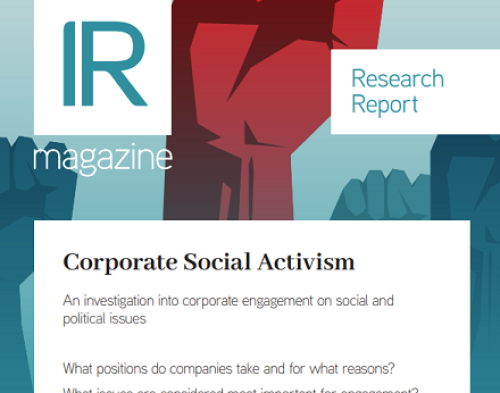The amount of assets managed under ESG criteria continues to grow strongly. But corporate incentive plans are struggling to keep pace with this change in investor focus, according to new research.
FTI Consulting and CGLytics have analyzed the pay policies of the FTSE 350 and ISEQ 20, which covers the largest stocks on Euronext Dublin. They find that, while companies are including more ESG issues in incentive plans, the proportion of pay linked to ESG performance remains small.
Overall, 27.4 percent of companies have added ESG metrics to their incentive schemes, finds the study, which reviews reporting from 2018. That proportion falls to just 12.8 percent if ‘customer satisfaction’ is not counted as an ESG measure.
The report argues that ‘customer satisfaction’ should be included because it tracks management engagement with a stakeholder group, though the authors acknowledge that some will disagree on this point.
While most companies still do not include ESG issues in incentive plans, the number is steadily increasingly, notes the report. It points out that back in 2008, only 4.3 percent of companies ‘included ESG-related KPIs in bonus plans’. That figure rose to 19 percent in 2013.
For companies that do include ESG metrics in their incentive programs, the report finds that on average those metrics account for less than 15 percent of bonus payments. ‘ESG measures continue to account for a tiny proportion of potential remuneration for [listed companies in] the UK and Ireland,’ state the authors.
Linking ESG and long-term performance
Where ESG measures are considered, it is usually under the annual bonus plan rather than any long-term share scheme, notes the report. Peter Reilly, senior director of corporate governance at FTI and one of the report authors, tells IR Magazine that pressure could grow on companies to start linking ESG and long-term incentive plans.
‘As investors’ approaches to ESG become more sophisticated and they are able to provide more robust valuations of key ESG issues, it seems only a matter of time before the pressure to include a certain element of ESG criteria under long-term incentive plans ramps up,’ he says. ‘Our view is that investors will expect measurable metrics, rather than the qualitative criteria we see under bonus plans currently.’
The report picks out some examples of incorporating ESG measures into incentive plans. For example, in 2016 Tesco created new metrics covering employees, customers and suppliers and included them in its performance share plan (PSP), a move that FTI and CGLyics say bucked the trend.
Last year, however, Tesco moved the ‘stakeholder metrics’ from the PSP to its annual bonus. In its remuneration report, the supermarket operator said it made the change ‘so [the metrics] can be tailored to the responsibility of each executive.’
Keeping up with best practice
Reilly says, given the ‘noise’ around the topic of ESG, it can be hard for companies to keep up with best practices. ‘Indeed, identifying strategic ESG risk and opportunities can be difficult: they vary by industry and even by company,’ he says.
‘For investors and companies, it is all about materiality. Good starting points for IROs can be the standards published by the Sustainability Accounting Standards Board, a review of the guidelines and views of your major (top 10) shareholders and an industry benchmarking exercise.’
But the internal view is by far the most important, adds Reilly. ‘What are the non-financial measures used to assess business performance and risk, and would they have a home in incentive schemes? Coupled with external guidance, there should be a number of KPIs worth considering and measuring,’ he says.
Regulatory changes are increasing pressure on investors to analyze ESG factors when looking at pay. The Shareholder Rights Directive (SRD) II, which is being transposed by European Union member states into law this year, specifically suggests investors consider ESG issues when analyzing executive pay packages. It also mandates say-on-pay votes across Europe, so a number of EU countries will see a big jump in investor focus on remuneration issues.
‘While say on pay has permeated most of the larger European markets, SRD II is set to embed that idea even further,’ says Reilly. ‘Given that the focus of SRD II is to promote long-term shareholder engagement, and ESG is seen by many investors as the ultimate tool to protect long-term value, the empowerment of shareholders under the directive will result in increased pressure on companies through direct engagement and proxy voting.’
Reilly highlights a separate set of European rules that could be even more significant for the future of ESG and executive pay. ‘Under new EU rules published in March, asset owners, insurance companies and money managers will be required to disclose how they are integrating ESG factors and how they adhere to ESG objectives in their investment decisions,’ he explains.
‘For public companies, this means the scrutiny on their non-financial risks and performance – and how executives are rewarded against those measures – is set to ramp up to even higher levels.’










